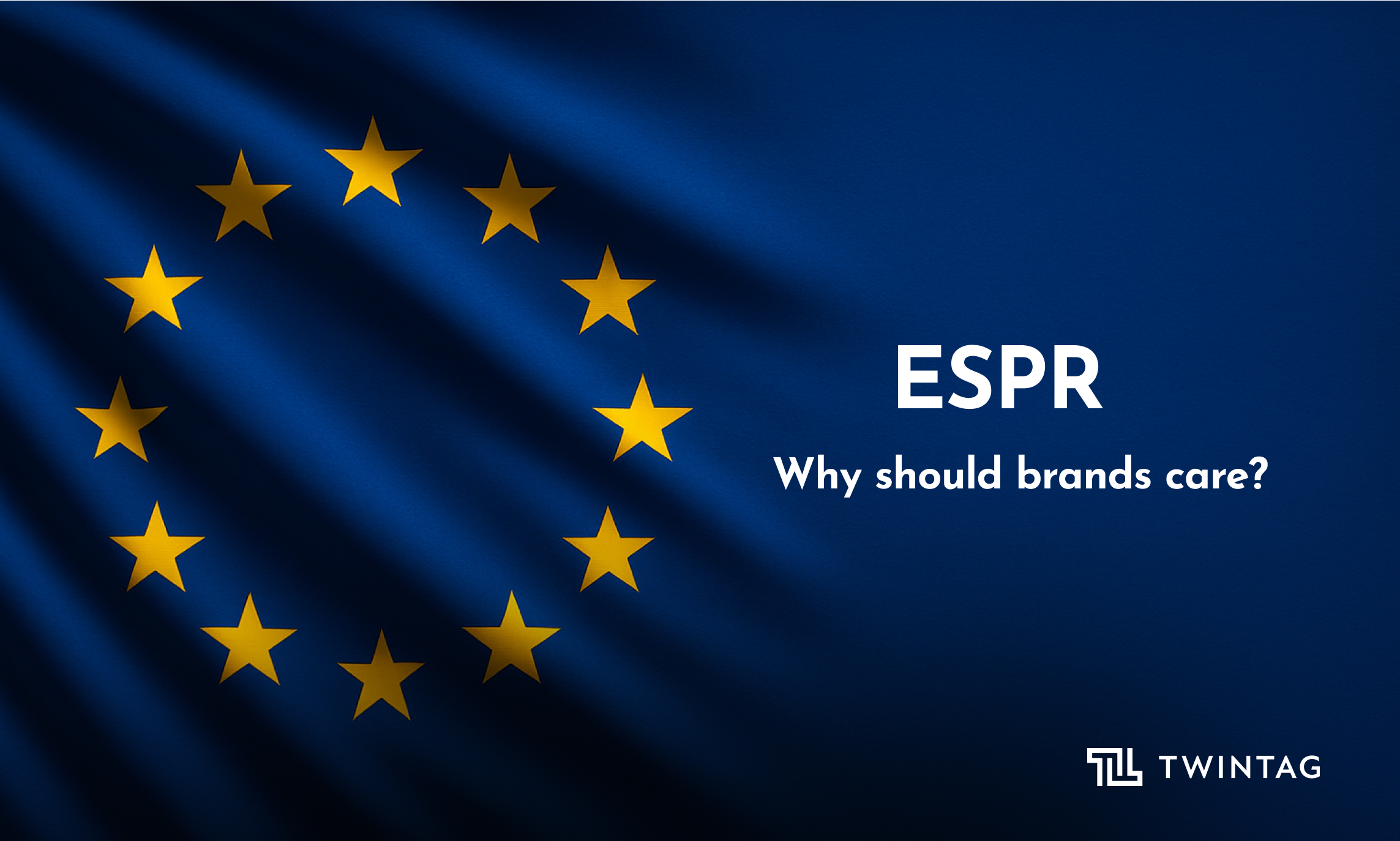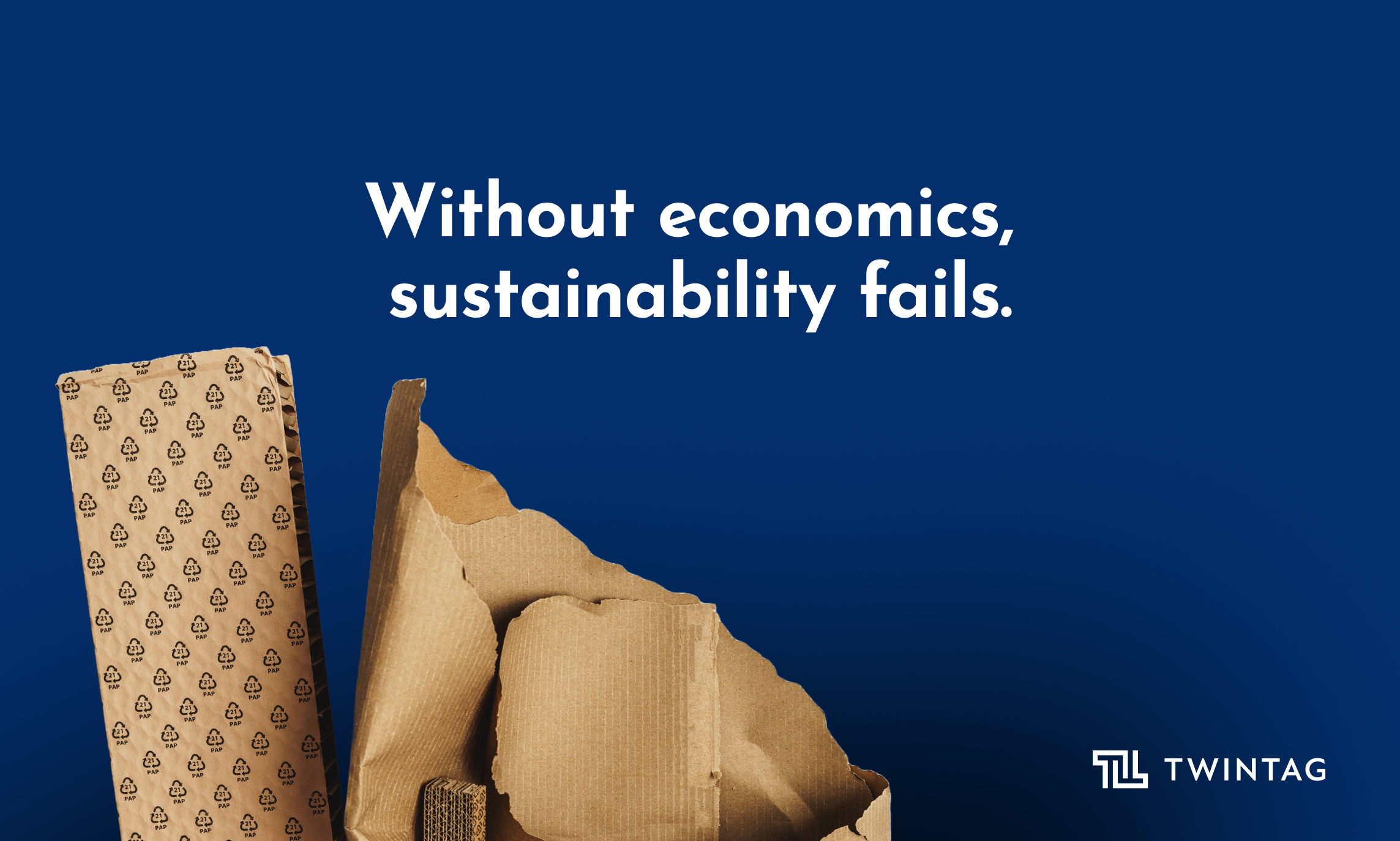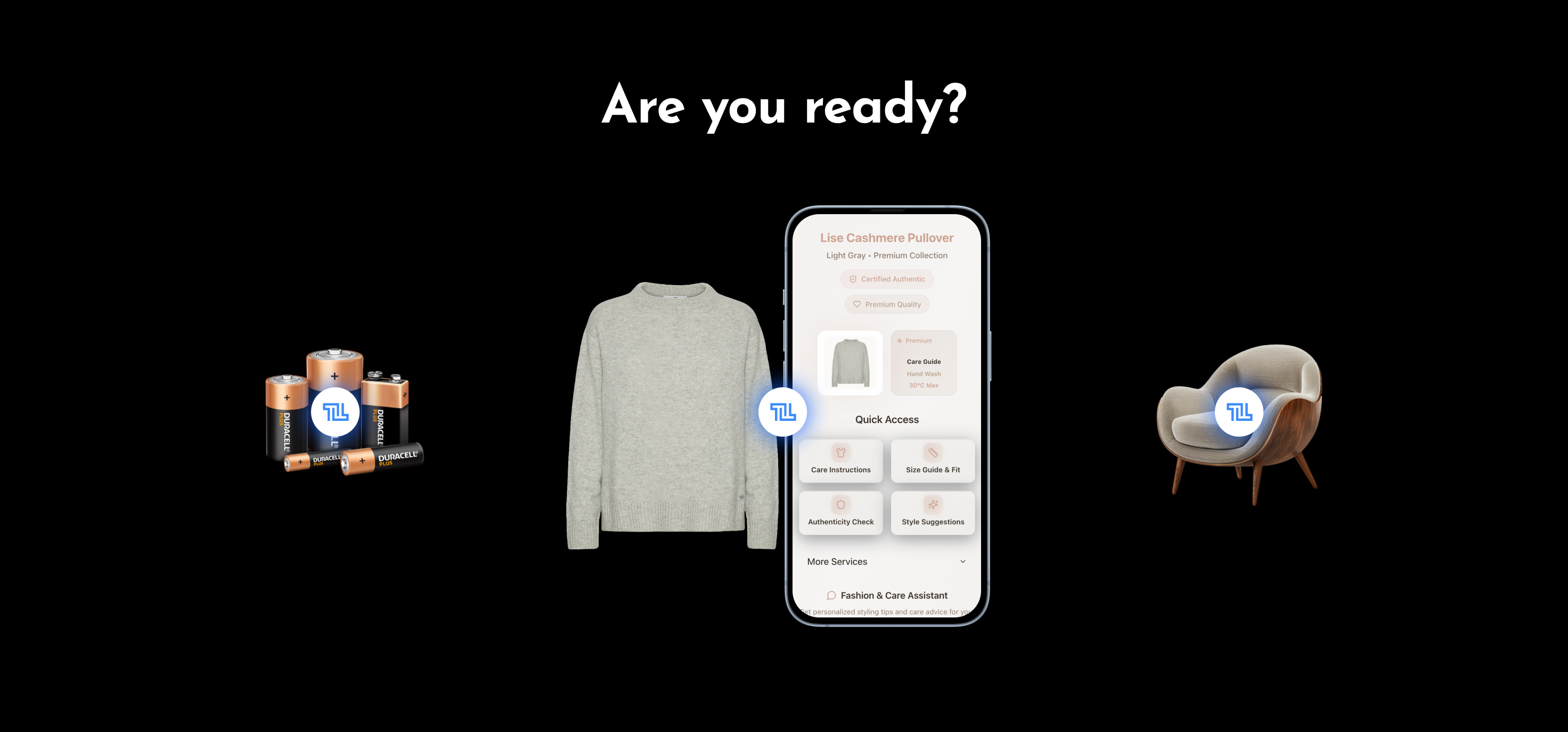The EU Digital Product Passports: from compliance check to game-changer for brands
The EU Digital Product Passports are more than just a checkbox for regulatory compliance. They're a powerful tool that could transform your business.
.png)
The brands that adopt Digital Product Passports (DPPs) strategically avoid fines and set themselves up for long-term success.
Here, it is important to mention that when we talk about Digital Product Passports (DPPs), we’re building on the EU’s definition: a digital record that provides comprehensive information about a product and its entire value chain. But we’re going a step further. In this article, we’re framing DPPs as digital twins—not just passive compliance markers but dynamic digital IDs that bring products to life. So, throughout this article, we use “Digital Product Passports” and “Digital IDs” or “Digital twins” interchangeably, spotlighting the dynamic interactions and enriched experiences they unlock across product touchpoints.
Let’s be real: Digital Product Passports aren’t just about meeting sustainability requirements or at least they shouldn’t be. They’re about creating transparency, driving consumer engagement, and unlocking value you might not have considered before. So, let’s dive into five ways the DPPs go beyond just "doing the right thing"—they can supercharge your business growth.
1. Collect valuable consumer data and insights
You’ve heard it before—data is gold. And with DPPs, your products can be the data-gathering machines you didn’t know you had. Imagine this: every time a consumer scans your product’s QR code, you get first-party data. Not just any data—real data about your customers and how they interact with your product.
Here’s what you can do with it:
- Target with precision: forget generic marketing campaigns. With DPP data, you can target consumers with laser-like precision based on their behavior and preferences.
- Revamp your email strategy: personalized emails aren’t just a “nice to have” anymore—they’re critical. With product data in hand, you can send highly relevant recommendations, increasing conversion rates like never before.
- Gather direct feedback: why wait for focus groups when you can get real-time feedback directly from your customers? DPPs allow you to understand exactly how they feel about your product and what they want to improve.
2. Hyper-personalized consumer engagement
In a world where personalization is king, DPPs give you an edge. Your customers want more than just product specs—they want to connect with your brand on a deeper level. Here’s where DPPs come in.
Let’s say a customer scans your product. They don’t just see the material and origin. They get a whole immersive experience tailored to them.
Here’s what you can deliver:
- Brand storytelling: share the why behind your brand. Make the customer feel like they’re part of your mission.
- Care and repair guides: help your customers extend the life of their product with interactive tutorials and care instructions.
- Rich media: DPPs allow you to offer more than text—share videos, tutorials, and interactive content. That’s how you turn a passive purchase into an active brand relationship.
3. Encourage circularity and maximize resale value
Consumers are more eco-conscious than ever, and DPPs make it easier for them to buy and sell second-hand items. Want to support sustainability while boosting your bottom line? Here’s how DPPs help:
- Support second-hand sales: imagine if buying pre-loved items wasn’t a gamble. With DPPs, customers can verify a product’s history and condition, making second-hand purchases feel as trustworthy as buying new ones.
- Extend product life: DPPs offer guidelines for repairing and maintaining products. When customers know how to make their items last longer, they’re more likely to remain loyal to your brand.
- Unlock new revenue streams: the resale market is booming, and with DPPs, your brand can get in on the action by providing authenticated pre-owned products. Not only does this build trust, but it also aligns perfectly with circular economy initiatives.
4. Full supply chain visibility—a game changer
In today’s complex supply chains, visibility is everything. DPPs don’t just stop at consumer interaction—they give you insight into your entire value chain. The result? Better decisions, better efficiency.
Here’s why that matters:
- Track the entire chain: you’ll be able to monitor your products from production to end-user. That means you can spot bottlenecks or issues before they become major headaches.
- Complete transparency: DPPs let you integrate sales order data and customer information, so you can see exactly how your product moves through the supply chain.
- Data-driven decisions: want to know when you’re overproducing or when you’re about to run out of stock? DPPs provide the visibility to make those decisions before they affect your business.
5. Authentication and counterfeit protection
Counterfeits are a major problem for many brands, but DPPs help safeguard your products and your reputation.
- Prevent grey market sales: real-time data on production and inventory levels means you can spot unauthorized sales before they become a bigger issue.
- Build consumer trust: imagine empowering your customers to verify product authenticity with a single scan. That’s exactly what DPPs can do—turning potential skeptics into loyal customers.
- Secure the resale market: DPPs give consumers the confidence they need to buy and sell pre-owned items, knowing they’re getting the real deal.
To illustrate, let’s look at the Digital Product Passport for textiles example - let’s imagine a workwear jacket with a serialized woven QR code attached to it. How does this workwear jacket move up this “value pyramid”?
.png)
Regulatory compliance
When a worker scans the QR code on their jacket’s tag, they can access detailed information about the materials used, the factory where the jacket was produced, and the energy and water consumed during its manufacture. This satisfies regulatory demands for environmental transparency, giving both manufacturers and consumers the ability to track the product’s impact across its lifecycle.
Optimized workflows: streamlining logistics and operations
With Digital Product Passports, every jacket in the supply chain has a unique identifier, allowing companies to track it from production to distribution. This ensures the correct quantities are delivered on time and helps prevent overproduction or shortages. For instance, if a batch of jackets needs repair, the DPP will provide the exact location of each product, making reverse logistics and repairs more streamlined.
On-product digital services: enhancing consumer experience and longevity
Now imagine a construction worker using the same QR code on their jacket to access care and repair guides. They receive tutorials on patching up a torn jacket or tips for washing it to extend its lifespan. If the jacket reaches the end of its life, the DPP could provide instructions on recycling or even facilitate sending the jacket back to the manufacturer for refurbishing or recycling.
So what’s next?
Digital Product Passports are not just about checking off a compliance box—they’re about future-proofing your business. Whether it’s gaining insights into your customers, creating richer brand interactions, or maximizing sustainability, DPPs offer a world of opportunity.
Don’t wait until regulations force your hand. Get ahead of the game and start exploring the limitless possibilities of Digital Product Passports today. Your customers—and your bottom line—will thank you for it.


-min.png)



